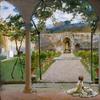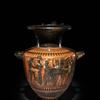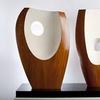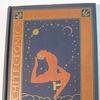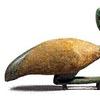$5 Million in Grants Announced for 45 Southern California Organizations for the Next Pacific Standard Time
- LOS ANGELES, California
- /
- January 27, 2021
The Getty Foundation has announced $5.38 million in exhibition research grants to 45 cultural, educational, and scientific institutions throughout Southern California to prepare for the next edition of the region-wide arts initiative Pacific Standard Time, scheduled to open in 2024.
The landmark series will return with dozens of simultaneous exhibitions and programs focused on the intertwined histories of art and science, past and present, that together address some of the most complex challenges of the 21st century—from climate change and environmental racism to the current pandemic and artificial intelligence—and the creative solutions these problems demand.
“Over the centuries art and science have come together and come into conflict, learned from one another and built upon shared insights,” says Joan Weinstein, director of the Getty Foundation. “We have faith that the remarkably diverse and inventive approaches taken by all the partner institutions will produce revelatory results and productive civic dialogue.”
Ann Philbin, director of the Hammer Museum, a collaborating partner in the initiative, notes that art and science have too often been put on opposite ends of the equation.
“We’re eager to break that pattern with this new edition of Pacific Standard Time as we collectively explore nothing less than two fundamental modes of understanding the world, and the powerful and surprising ways they connect,” says Philbin.
Thematically linked exhibitions in the 2024 Pacific Standard Time (PST) will range from historical surveys of how artists have pictured scientific worldviews—and how scientists have used images as tools of persuasion—to interventions by contemporary artists, scientists, and designers in the fight against ecological damage and environmental pollution. Projects will reflect on revolutionary biomedical technologies that until recently seemed speculative, as well as the uses and abuses of technology and the future of artificial intelligence. Exhibitions will also reveal how sci-fi futurism is being reimagined by architects, filmmakers, and Indigenous activists.
“Art and science share a common commitment to curiosity and a quest for the unseen,” observes multidisciplinary artist Tavares Strachan, who will be included in several exhibitions. “Whether that is a scientist using a microscope to look at what is invisible to the human eye or an artist like me studying scientific pioneers who have disappeared from or were never included in the history books, both of us are driven to explore. It’s what we do and how we survive.”
The ongoing influence of Southern California’s scientific culture will be a recurring theme, whether in exhibitions that trace the social and artistic repercussions of the aerospace industry and space exploration or that examine technical innovations in Hollywood movie-making.
John Mulchaey, director of the Carnegie Observatories, which is partnering with the Los Angeles County Museum of Art (LACMA) on its PST exhibition, extols the history of science innovation across the region, saying “The achievements of researchers in Southern California over the past century, from measuring the size and expansion of the universe to sending the first message over the internet, have been staggering.” Juna Kollmeier, a prominent staff astronomer at the Carnegie and a participant in the PST initiative as well, adds, "PST gives us the chance to increase public awareness about these breakthroughs in the face of rising skepticism of scientific truth by considering their broader artistic and cultural dimensions.”
As with the previous PST initiatives, the participating organizations constitute a community of institutions throughout Southern California, diverse in profile but joined by a common purpose. Participants funded in the research and planning stage include civic institutions such as LACMA and the Natural History Museums of Los Angeles County, academic institutions including California Institute of Technology and Southern California Institute of Architecture, university-affiliated museums and galleries such as the Hammer and the California Museum of Photography at UC Riverside, organizations working at the convergence of contemporary art and science including Fathomers and Fulcrum Arts, and museums focused on particular fields of the arts, such as the Academy Museum of Motion Pictures and the Lucas Museum of Narrative Art. The participating institutions cluster in and around Los Angeles but are spread as far south as San Diego and as far north as Santa Barbara.
“PST comes at a moment when so many museums and visual arts organizations are struggling to stay afloat after being closed for nearly a year,” says César García-Alvarez, director and chief curator at The Mistake Room. “Getty’s research support allows institutions like ours to take on major projects that not only encourage us to think big but also gift us opportunities to build meaningful community partnerships for the future.”
Like the first two PST collaborations, the participating cultural and scientific institutions, large and small, will present their research in exhibitions, publications, performances, and public conversations and programs that bring artists and scientists in dialogue with each other and with community leaders and the public. A second round of grants from the Getty Foundation, to be announced at a later date, will support the implementation of the exhibitions. Several additional projects are in development, including exhibition and programming partnerships, and will also be announced in coming months.
A complete list of partner institutions to date and their projects may be found here.
Thematic Overview of the Next Pacific Standard Time
Exhibitions on environmental justice and sustainability include:
- Sinks: Places We Call Home (Self Help Graphics and Arts), presenting interdisciplinary, research-based projects by artists Beatriz Jaramillo and Maru Garcia about the long-standing reservoirs of industrial pollution in two communities of color near the institution’s studios
- World Without End (California African American Museum), an examination of the legacy of Dr. George Washington Carver—an public proponent of sustainable organic agriculture and a practicing artist—and the impact of his thinking on contemporary artists
- Carolina Caycedo (Vincent Price Art Museum), an exhibition of the artist’s collaborative work with scientists, engineers, and local communities across the Americas to envision equitable and sustainable water use
Projects focused on climate change include:
- Ice Age Field Site (Working Title) (La Brea Tar Pits), featuring an installation by artist Mark Dion that uses the museum’s ongoing paleontological excavations and Ice Age specimens to connect climate change in the Los Angeles Basin 50,000 years ago to climate change today
- Breath(e) (The Hammer), bringing together contemporary artists with environmental scientists, atmospheric chemists, social justice activists, architects, and designers to generate new ways of countering threats to our planetary lungs: earth’s oceans and forests
- Olafur Eliasson (MOCA), a large-scale, interactive, commissioned installation at the museum’s Geffen Contemporary responding to the geography and ecology of Los Angeles, supported by examples of the artist’s past works including his Glacier Melt series (1999/2019)
Exhibitions that center Indigenous knowledge include:
- Cosmovisión Indígena (Santa Barbara City College), preserving and sharing traditional Mixtec and Zapotec dyeing and weaving technologies through a community-based laboratory and the production of new textile-based works
- Indigenous Futures (Autry Museum), exploring the work of Native artists who use themes of Western science fiction to reinstate and celebrate Indigenous peoples and their traditions of environmental understanding and protection
- Cultures of Corn (Fowler Museum at UCLA), exhibiting works spanning 8,000 years, from Olmec jade tools to contemporary art installations and performances, to synthesize research into the development and transmission of Indigenous knowledge about the cultivation of maize
Exhibitions that feature global histories of science and art include:
- Cosmologies (LACMA), a major loan exhibition of artworks representing ancient systems of cosmology across the Americas, Egypt, China, India, sub-Saharan Africa and the Middle East—from the Neolithic period to the present
- Wonders of Creation (San Diego Museum of Art), investigating the intersections between art and science in the Islamic world from the 7th century until now, centering on the 13th-century cosmology of Zakariya ibn Muhammad al-Qazwini
- Seeing for Yourself (The Huntington), investigating how artists and scientists have used visual media to make scientific research visible and understandable through new studies of the institution’s unparalleled collections of the history of science from the 16th century to the present
Projects investigating technology and futurism include:
- The Rise of Cyberpunk and Digital Dystopias (Academy Museum of Motion Pictures), tracing the scientific, technological, and cultural developments behind movies such as Blade Runner, Akira, and The Matrix, as well as under-recognized cyberpunk films from Africa, Southeast Asia, and Latin America
- Invisibility: Powers and Perils (Skirball Cultural Center), revealing themes of dematerialization, social marginalization, and surveillance in 21st-century science and technology, featuring research scientists such as Joy Buolamwini of the Algorithmic Justice League
- Planet City (Southern California Institute of Architecture), using an architectural installation (designed by movie modelers and visual effects artists) and an interactive video game to imagine a world in which all 7 billion humans live in a single, environmentally sustainable mega-city, leaving the rest of the planet to revert to wilderness
Other major themes include medicine and the body, the science and technology of architecture and design, scientific imaging techniques, and digital surveillance and artificial intelligence.


